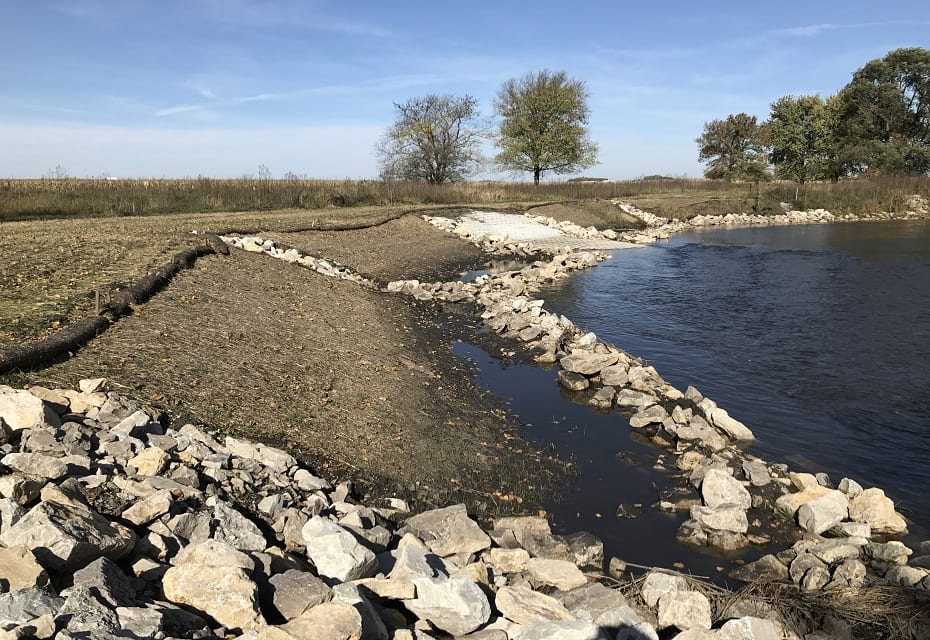Each oil and gas pipeline project is unique, and many factors go into making critical decisions like implementing streambank stabilization measures. Streambank stabilization is an integral part of the immediate aftermath of the project.
Failure to implement effective streambank stabilization techniques encourages runoff and erosion. When this happens, valuable topsoil washes away from the project site, potentially exposing the pipeline. One technique for streambank stabilization is the use of rock vanes.
What Are Rock Vanes?
Rock vanes are structures that cut into the stream channel in an upstream direction. They are typically linear structures made of large rocks, like flat boulders weighing at least one or two tons. One way to describe a rock vane is to imagine a large tree that falls into a stream. The tree would disrupt, slow, and reroute the flow of water. A rock vane does just that.
Rock vanes can slow the rate of water flow significantly, reducing the risk of erosion as a result. The faster the water flows along a stream, the better chance there is of erosion, as swift-moving water strips topsoil quickly. Rock vanes work to redirect the water flow toward the center of the stream. Additionally, rock vanes tend to create scour pools within the stream as well.
Types of Rock Vanes
When implementing rock vanes into a project, engineers tend to choose one of three options:
• Single Vane
• J-Hook Vane
• Cross Vane
Although each project varies, a typical rule of thumb is that rock vanes will angle off the bank at a rate of 20 to 30 degrees. Engineers look for areas where streamflow runs into the streambank at acute angles. The deeper into the water the rock vane goes, the shorter it will be. So, the highest point of the rock vane will be at the bankfull, where it will then slope gradually into the water.
Constructing Rock Vanes
Most of these designs use flat rocks around six feet by four feet by three feet. These rocks work well whenever an embankment is longer than 20 feet. Engineers must ensure that the stones touch each other when placed in the water. Additionally, rock vanes will also require footer rocks to the depth of scour.
If a J-hook vane is needed, the design will remain the same except for the last couple of rocks. Engineers will space one to two rocks about one-half of the rock diameter apart. This is done to slow the rate of flow convergence. If the stones take hold, there should be a large scour hole for energy dissipation.
Lastly, engineers also have the option to implement cross vanes. These are used in situations where controlling the grade of the streambank is essential. The cross vane will have a center structure that is perpendicular to the flow of water and two crossing rock vanes.


